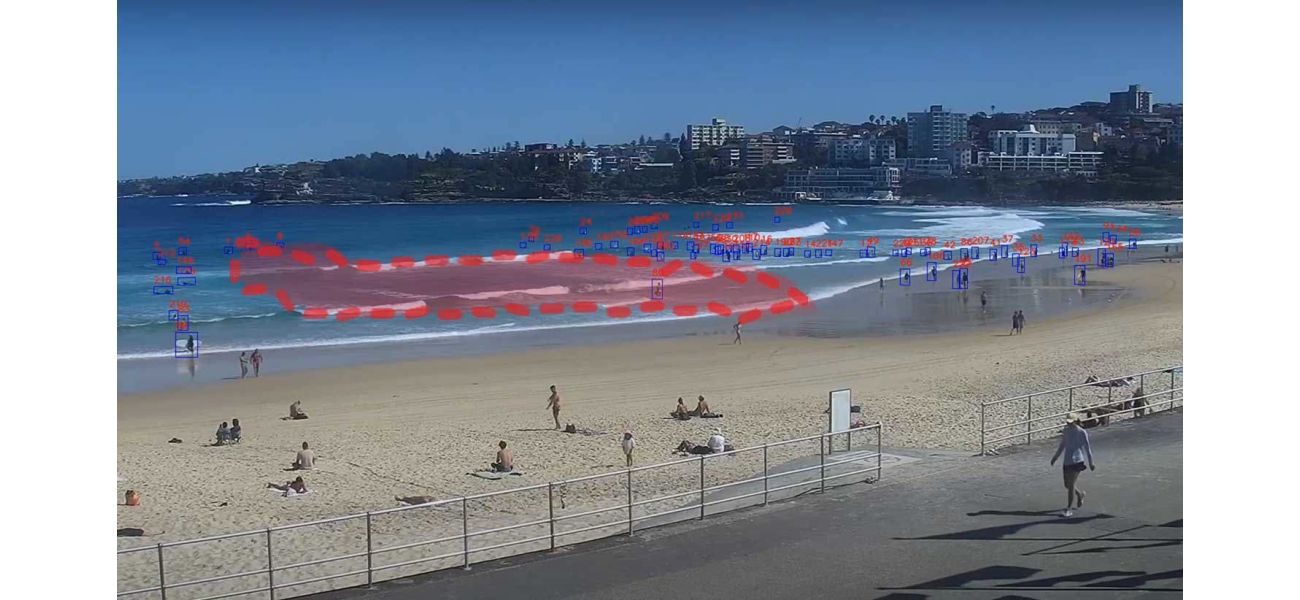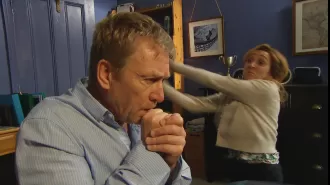New AI software will aid in Australia's beach safety during the upcoming summer season.
Group of friends invent AI lifesaver, after seeing swimmer in distress, to monitor Australian beaches.
October 14th 2024.

A group of friends were enjoying a day at the beach when they witnessed a terrifying incident. A swimmer had gotten caught in a rip current and was struggling to stay afloat. Without hesitation, the friends sprang into action and were able to save the swimmer just in time. However, this experience left a lasting impact on them and they knew they had to do something to prevent similar situations from happening in the future.
That's when they came up with the idea for ResQvision, the world's first AI lifesaver. The masterminds behind this groundbreaking technology were surf lifesaver Alex Piatek and his friends Bryan Pakulski and Julian Kovacek. They wanted to create a system that could constantly monitor the ocean and alert rescuers of any potential dangers.
The way ResQvision works is by using a camera connected to the internet to scan the ocean. Through advanced artificial intelligence, it can detect rip currents, distressed swimmers, and even large sea creatures. What sets it apart is its ability to differentiate between a swimmer who is in trouble and one who is simply taking a break. This is made possible by a combination of AI models that specifically target rip currents and marine life.
In the event that a swimmer is detected in a dangerous situation, ResQvision immediately sends a text alert to off-duty rescuers. The message includes the exact location of the swimmer as well as a video feed of the situation. This allows the rescuers to quickly and efficiently respond to the emergency.
To ensure the effectiveness of ResQvision, it will be tested at Sydney's famous Bondi Beach this summer. The surf lifesavers at Bondi will provide feedback on the technology, which will then be used to further improve and refine the system. The ultimate goal is to implement ResQvision on all Australian beaches and eventually expand it globally.
Statistics from Surf Life Saving Australia's 2024 National Coastal Safety Report show that over half of the coastal drownings in the previous year occurred at beaches. Shockingly, one in three of these tragedies were caused by rip currents. Even more concerning is the fact that seven out of ten drowning deaths happened more than one kilometer away from a surf lifesaving service.
Alex Piatek, the driving force behind ResQvision, believes that this technology has the potential to save countless lives. As a volunteer lifesaver himself, he has seen the devastating consequences of after-hours incidents and rip currents. He is determined to make a difference and is confident that ResQvision will revolutionize beach safety not just in Australia, but around the world.
"In light of the recent increase in coastal drownings, launching ResQvision couldn't come at a better time," Piatek stated. "We have seen a 22% spike in these tragedies, with after-hours incidents and rip currents being major contributors. As someone who is passionate about preventing these senseless deaths, I am proud to have played a part in creating ResQvision. With its imminent rollout this summer, I truly believe that this technology has the power to significantly improve beach safety globally."
That's when they came up with the idea for ResQvision, the world's first AI lifesaver. The masterminds behind this groundbreaking technology were surf lifesaver Alex Piatek and his friends Bryan Pakulski and Julian Kovacek. They wanted to create a system that could constantly monitor the ocean and alert rescuers of any potential dangers.
The way ResQvision works is by using a camera connected to the internet to scan the ocean. Through advanced artificial intelligence, it can detect rip currents, distressed swimmers, and even large sea creatures. What sets it apart is its ability to differentiate between a swimmer who is in trouble and one who is simply taking a break. This is made possible by a combination of AI models that specifically target rip currents and marine life.
In the event that a swimmer is detected in a dangerous situation, ResQvision immediately sends a text alert to off-duty rescuers. The message includes the exact location of the swimmer as well as a video feed of the situation. This allows the rescuers to quickly and efficiently respond to the emergency.
To ensure the effectiveness of ResQvision, it will be tested at Sydney's famous Bondi Beach this summer. The surf lifesavers at Bondi will provide feedback on the technology, which will then be used to further improve and refine the system. The ultimate goal is to implement ResQvision on all Australian beaches and eventually expand it globally.
Statistics from Surf Life Saving Australia's 2024 National Coastal Safety Report show that over half of the coastal drownings in the previous year occurred at beaches. Shockingly, one in three of these tragedies were caused by rip currents. Even more concerning is the fact that seven out of ten drowning deaths happened more than one kilometer away from a surf lifesaving service.
Alex Piatek, the driving force behind ResQvision, believes that this technology has the potential to save countless lives. As a volunteer lifesaver himself, he has seen the devastating consequences of after-hours incidents and rip currents. He is determined to make a difference and is confident that ResQvision will revolutionize beach safety not just in Australia, but around the world.
"In light of the recent increase in coastal drownings, launching ResQvision couldn't come at a better time," Piatek stated. "We have seen a 22% spike in these tragedies, with after-hours incidents and rip currents being major contributors. As someone who is passionate about preventing these senseless deaths, I am proud to have played a part in creating ResQvision. With its imminent rollout this summer, I truly believe that this technology has the power to significantly improve beach safety globally."
[This article has been trending online recently and has been generated with AI. Your feed is customized.]
[Generative AI is experimental.]
0
0
Submit Comment





